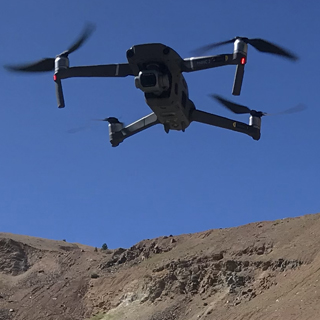Hobbyist and Recreational Users
Definition
Recreational or hobbyist use of Unmanned Aerial Systems (UAS) includes flying for enjoyment or educational use (class project, for example). It does not include flying for any commercial or public university uses. Please see the FAA's Educational Use for more details.
For example, a hobbyist may fly and take photographs for personal use. However, using the same UAS to take photographs or videos for sale or compensation is not permitted under the definition of hobbyist flying.
If you want to fly for compensation or marketing purposes, you are considered a Commercial User and fall under a different set of FAA regulations.
If you want to fly for research, you are considered a Public University User.
Where can you fly as a hobbyist?
Per current FAA regulations your aircraft (drone, quadcopter, etc.) may not be operated closer than 500 feet to any person, vessel, vehicle or structure. This means that you may not fly your drone outdoors in many areas on UM campuses.
Check out the following resources for guidance on flying safely in areas that are permitted:
- FAA's "I Fly Safe" campaign including pre-flight checklist
- FAA's UAS site
Safety Guidelines
Currently, several UAS organizations, with the cooperation of the FAA have issued safety guidelines that hobbyists must adhere to when flying. The guidelines, courtesy of Know Before You Fly, are not necessarily the same as the FAA regulations. In the case of a guideline conflicting with FAA regulations, UM will adhere to the FAA regulation.
- Follow community-based safety guidelines, as developed by organizations such as the Academy of Model Aeronautics (AMA).
- Fly no higher than 400 feet and remain below any surrounding obstacles when possible.
- Keep your UAS in eyesight at all times, and use an observer to assist if needed.
- Remain well clear of and do not interfere with manned aircraft operations, and you must see and avoid other aircraft and obstacles at all times.
- Aircraft may not be operated closer than 500 feet to any person, vessel, vehicle or structure.
- Contact the airport or control tower before flying within five miles of an airport.
- Do not fly in adverse weather conditions such as in high winds or reduced visibility.
- Do not fly under the influence of alcohol or drugs.
- Ensure the operating environment is safe and that the operator is competent and proficient in the operation of the UAS.
- Do not fly near or over sensitive infrastructure or property such as power stations, water treatment facilities, correctional facilities, heavily traveled roadways, government facilities, etc.
- Check and follow all local laws and ordinances before flying over private property.
- Do not conduct surveillance or photograph persons in areas where there is an expectation of privacy without the individual’s permission.
Contact Us for Help
Please contact us if you have any questions!
